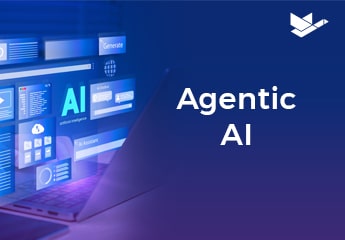 Almost all businesses are feeling enormous urgency to transform digitally to avoid becoming irrelevant. Scary stuff. And the pressure on insurers – where stakes and customer emotions can both run high – is greater than ever.
Almost all businesses are feeling enormous urgency to transform digitally to avoid becoming irrelevant. Scary stuff. And the pressure on insurers – where stakes and customer emotions can both run high – is greater than ever.
To win in today’s crowded and hyper-competitive market requires speed, efficiency, and ease of use. That means going digital – and executed correctly, every step toward digital transformation can and should move insurance carriers closer to success.
The trick is not to get overwhelmed. Consider digital transformation a journey, rather than just a destination – and collect the benefits along the way. Here’s a quick look at three stages of carriers’ digital journeys:
Stage 1: Automating Current Processes
The first stage on the journey to full digitalization is the automation of current processes. There are real gains to be made here, and it doesn’t require a great deal of imagination to list internal and external processes that can be made more efficient and effective with digital technologies, such as:
- Transforming incoming PDFs into digital files for prefilling quoting data
- Automating underwriting rules and driving referrals through more efficient workflow processes
- Automatically opening claims coverage and setting reserves based on pre-defined rule sets
Stage 2: Optimizing for Strategic Focus
The second stage of an insurer’s digital maturity is that of optimizing for strategic focus. A step beyond automation of tasks, this stage focuses on critical elements that differentiate carriers in the marketplace and leveraging digital technologies and strategies to optimize processes that support those market goals. For example:
- Product excellence – some insurers are optimizing around product innovation, aiming to configure and create new products to serve the needs of specific markets such as commercial specialty
- Speed to market – others are optimizing around the ability to change rates, rules, and product offerings faster than their competitors
- Customer / agent experience and service – still others are optimizing around being easiest to do business with, typically through a preferred channel
Like the automation stage, the strategic focus stage has inherent value by itself, and is not necessarily just a stepping stone to another stage in a carrier’s journey. Indeed, market differentiation alone can make or break a business.
 Stage 3: True Digital Transformation
Stage 3: True Digital Transformation
The third, and most developed, stage of digital maturity is what I refer to as True Digital Transformation: the complete, end-to-end transformation of your business to an open, connected “platform” model.
Sometimes referred to as “ecosystems,” platform companies, like Amazon and eBay, are organized to meet evolving market needs by orchestrating connections between buyers, sellers, products, data, and service providers – all in an open, informed, iterative, and dynamic cycle of supply and demand.
While this level of development clearly requires extensive digital underpinnings in order to operate, the model requires more than technology alone. It requires a new way of thinking and operating, and represents the complete transformation of an insurer’s organization and go-to-market strategy. True digital transformation:
- Puts customer needs and expectations at the center of every decision and process
- Shifts an organization from discrete internal and external business units – each with its own sets of data and processes – to creating ongoing, real-time communications and data sharing
- Facilitates dynamic connections among shifting market participants
- Radically changes relationships between partners, competitors, suppliers, etc.
The truth is, not all businesses – and certainly not all insurers – need to achieve “true digital transformation” to be (and remain) relevant to the market. Depending upon your company’s strengths, size, goals, lines of business, and other factors, each of these stages of digital maturity can present tremendous value to your customers and stakeholders. The key is taking the time to realistically assess your company’s present reality and goals for the future, then plan accordingly.





